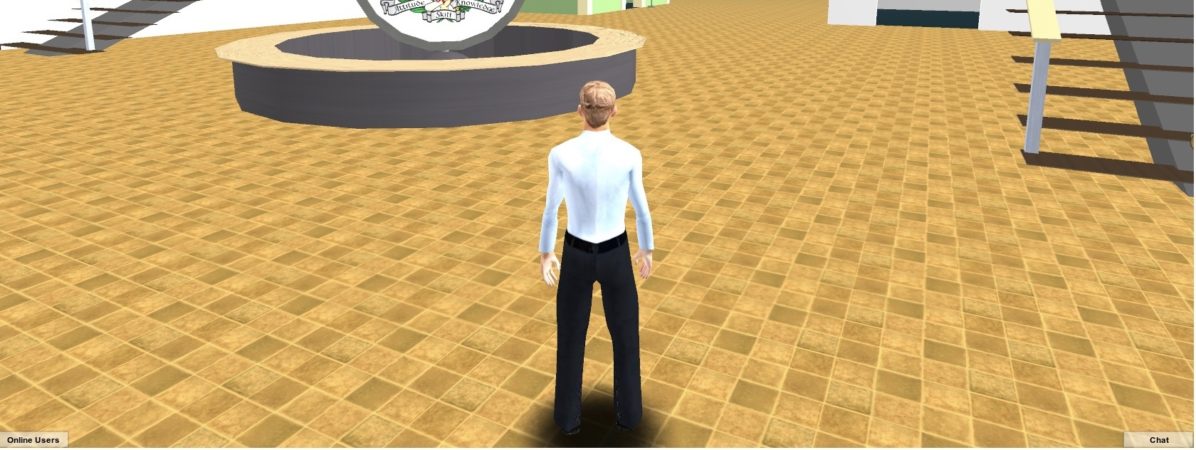
Enter the power of virtual technology.
The Students and Parents in Cooperative Education (SPICE) Family Literacy Program serves central Maine’s Regional School Unit #3 (RSU 3). SPICE’s mission is to integrate childhood and adult education.
“You can do a whole bunch with your kids very young, and you’re giving a parent the confidence that he can help his child be a better student,” says Pat Hughes, RSU 3 Career, Adult, and Community Education Director.
RSU 3 spreads across 440 square miles, including 11 towns. Across this vast distance, there is no one town where people gather. So, SPICE educators went straight to their adult learners’ homes. They would work with students on their educational goals, whether that was working through the HiSET prep workbook or completing worksheets for a course.
A 2008 state audit found that parents were pleased with how much they learned with these home visits. But an unmet need was mentioned again and again: SPICE’s adult learners were lonely.
The Adult Education State Director asked Hughes what SPICE was going to do. Hughes laughed as she recalled the conversation: “Really, he was asking me to solve rural isolation.”
SPICE was meeting all of their learners’ needs except one, rural isolation, and this drove their focus on using technology to strengthen their program.
While Hughes knew the research on how blended learning supports adult learners most effectively, the decentralized nature of RSU 3 made the face-to-face part of blended learning very difficult, if not impossible. The question Hughes knew SPICE needed to answer was: “Since right now we bring SPICE to our learners, how can we connect them to others without needing them to come to us?”
Her answer: Do it virtually.
A virtual learning center is different than distance or online learning. Hughes emphasized, “This is not distance learning. This is human-supported learning because it is virtual.”
In the RSU 3 Virtual Learning Center, every avatar has a real person behind it. Learners can interact with other learners and their teachers in real time. Teachers are trained to stop at every avatar in the Center to ensure each learner experiences the human connection that a virtual world provides.
In 2008, SPICE was already using technology in innovative ways. They incorporated pre-made courses into their programs, and they provided laptops to their learners. (A note: SPICE now also provides mobile hotspots to learners who do not have their own wifi access.) Their IT department was willing to take on this new virtual world challenge, a critical part of their success, according to Hughes.
The IT department partnered with Reaction Grid, a company specializing in virtual world projects, to create the first level in the Center. From there, the IT department took over the development and has grown the program to four levels, including a HiSET prep class, a family literacy classroom offering the early childhood curriculum, and community college classes.
The Center, which is solely for adult learners, supports SPICE’s mission to teach parents the skills they need so they can teach their children. Through the Center’s human-supported, flexible learning environment, SPICE instills confidence in the adults that they can and should be “the first teachers in their children’s life,” according to Hughes.
In what may be counterintuitive for those not experienced with technology in education, the Center often allows for more human support than traditional face-to-face classrooms. The Center’s anytime, anywhere learning alleviates attendance issues. Learners are no longer penalized if a life commitment gets in the way, whether it’s a sick child or a call into work. Instead, they can do the work at a later time, still with the support of other avatars in the Center.
SPICE’s learners love the Center. They are thrilled to be able to go in and talk to teachers and classmates. They see the avatars as who they are: real people. They no longer feel isolated, even though they are still in their homes far away in the physical world from other learners. As Sylvia Moody, a SPICE student, said, “Not only was it a great learning experience, but I think I made a few friends. I’d like to think they see it the same way. So thanks millions, I’m forever grateful!”
Another SPICE learner, Andrew Johnson, also described how fun the Center can be, explaining, “I don’t really like schoolwork, but [the Center] makes it more fun because it reminds me of playing a video game. Whenever I need a break, I can walk around and jump off the roof.” Many SPICE learners are ones for whom traditional school was not successful. SPICE knows they need to get these learners interested in and enjoying the learning process again, and just coming back to the school building is not always the answer.
Hughes admitted that the overwhelming success of the Center surprised even them: “People could not believe that adults were actually spending time in the Center without doing classwork.” Since the Center went live in 2012, SPICE has seen an increase of more than 1,000 percent in learner hours, and an increase of more than a 254 percent in the number of students served.
SPICE is leading the way in transforming family literacy for rural populations. As Hughes puts it, “When the limitations of conventional education are removed, the possibilities of what can be learned and achieved become limitless.”